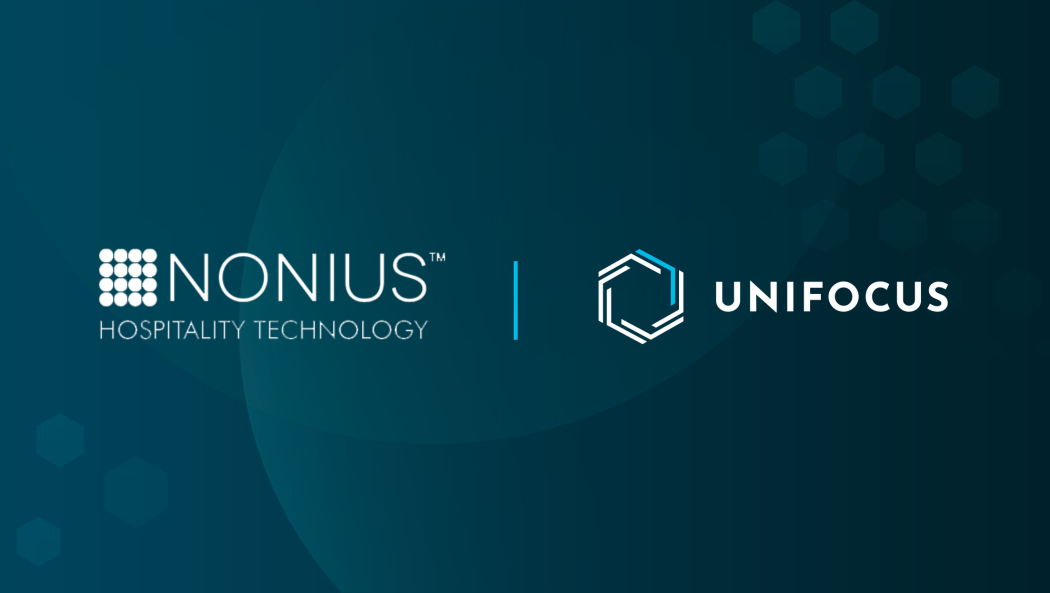April 2017 - By Mark Heymann - Hotel Business Review - As a growing number of cities and states legislate minimum wage hikes, hotel operators might be tempted to respond with a hiring freeze to avoid higher labor costs. This article explores the potential negative impacts hotels risk with a halt-on-hiring approach as well as more effective ways to offset higher wages. The not-so-simple truth is that increasing the minimum wage will require hoteliers to take a more measured look at their business in specific time periods. They'll need to understand the wage increase impact at peak and non-peak times, and determine what their true minimum staffing levels can be while still servicing customers to their expectations.
While it appears unlikely the new White House administration will continue the efforts of its predecessor to raise the federal minimum wage for the first time since 2009, movements like the Fight for $15 already have spurred seven U.S. states - Arizona, California, Colorado, Maine, New York, Oregon and Washington - as well as 18 cities and counties to legislate their own wage hikes. Many of these are already being phased in with incremental increases.
On July 1, 2016, San Francisco raised its minimum wage from $12.55 to $13 per hour; by 2018 it will hit $15. In a San Francisco Chronicle article ("SF's minimum wage hike took effect July 1, but changes little," Jessica Floum) updated three days after the initial hike took effect, David Neumark, an economics professor and director of the Economic Self-Sufficiency Research Institute at UC Irvine, cautioned that raising the minimum wage can lead to lower employment. "The adjustment is not so much through firing people but through slower hiring," he said.
A slowdown, or even a halt, in hiring might be a realistic option in the short term until a hotel can shake out the impact of higher labor costs. It also might work if an organization is aggressively turning to new technology that reduces the need for labor. But overall, a hiring freeze has significant long-term negative impacts and those potential casualties include employee engagement, customer service, and, ultimately, customer loyalty.
Impact on Engagement
Any time an organization has turnover, employee engagement may well suffer. If a hiring freeze results in under staffing, it can lead to fatigue and dissatisfaction in the remaining workers who have to shoulder the burden. A Washington Post report ("What hiring freezes do to your other workers," Jena McGregor, Jan. 25, 2017) on the potential impact of the administration's temporary hiring freeze on federal workers had this to say: "If hiring freezes lead to frustration and burnout, it's usually the top performers who leave first. And limiting the number of people who are hired, [human resources experts] say, can result in more risk aversion -- and therefore, less innovation -- while driving stressed and overwhelmed workers to take shortcuts."
When star performers leave, even newer employees who have yet to hit their stride may wonder why they are there. That can trigger a dip in morale that compromises the level of service staff can deliver. And when the guest experience declines, so does the hotel's business.
What's more, if customer demand exceeds service capabilities, the solution is to hire. In an improving economy, like today's, demand for travel increases, leading to higher occupancy. And management can't afford to forego extra business to avoid paying a higher wage because with the right controls the incremental profit will exceed the costs of business. Looking at housekeeping, for example, if a hotel stops hiring in response to an 15-percent minimum wage increase, then gains an additional 15 rooms occupied per day, the revenue and therefore the incremental profit from those additional rooms more than offsets the distributed cost of cleaning them at the higher wage rate.
Raising Rates
In 2015, Los Angeles implemented a minimum wage increase limited to its largest non-union hotels, testing the waters for a broader hike. While some layoffs did occur, many of the affected hotels were able to offset the higher costs by raising food prices 15 to 30 percent, according to a Reuters article ("New Amenity at LA Hotels: A Much Higher Minimum Wage," Alex Dobuzinskis, April 3, 2016). In that same article, however, the Hotel Association of Los Angeles cautioned that this was only possible because high demand had raised hotel occupancy in the city to a record high and posited that smaller hotels with less of a profit cushion would face tougher challenges.
Another caveat to this approach is that when the market turns down wage rates won't do likewise. It's one thing to absorb wage increases in a growing economy, but if it flattens or declines, hotels will have to address productivity.
Optimizing Peak and Non-Peak Labor
In the fitness world, interval training calls for increasing and decreasing the intensity of activity over the course of a workout in order to maximize health benefits. Similarly, hotel managers might find they can navigate peak and non-peak periods without staffing up by having processes in place where workers are more productive for short stretches, leading to higher productivity. The key is keeping that "sprint" to a reasonable length of time, for example, a one-hour lunch peak from noon to 1 p.m. But if a shift is understaffed and that peak now extends from 11:30 a.m. to 1:45 p.m., fatigue and frustration will likely set in and undermine any productivity gains.
Another approach is to look for opportunities to move specific tasks to off-peak times in order to speed up peak service. For instance, many restaurants have adopted the use of tableware roll-ups to help turn tables faster. Putting staff to work preparing those roll-ups when business is slower enables them to turn tables faster, thereby increasing customers served when demand is high.
Ultimately, the ability to make up a wage increase depends on the size of the hike. It's conceivable that a hotel could offset the additional labor costs of a five- to 12-percent wage hike by restructuring work and increasing productivity and still meet the service requirements of its guests. However, if the increase is larger - perhaps in the 30 to 40 percent range - it becomes more difficult to make up the difference with only productivity gains. In a high-demand market, if there's enough price elasticity to adjust rate to offset the remainder of the increase, that's a possible solution. But, as we explored above, it becomes more challenging in a tighter competitive environment.
Another reality is that when the market flattens or declines and wage doesn't, it will likely lead to more layoffs because revenue will also decline. The industry saw extreme examples of this in the wake of 9-11 and the 2008 market crash, when entire wings of hotels shut down. A key is to be ever vigilant and monitor market conditions tightly.
Food For Thought
Looking forward, widespread minimum wage hikes might spur fundamental changes in the way work is structured. A few thoughts to consider:
- With the transition from the Obama to the Trump White House, minimum wage will likely become more of a states' issue. The question will be, as certain states increase minimum wage, will that change the dynamic of workforce movement? If the minimum wage is set at $14 in one state and $8 in a neighboring state, people who live within commuting distance of the state line might cross the border for the better paying job. And people farther from the state line might move, as long as the higher pay is not offset by a higher cost of living.
- In certain areas of a hotel, could labor be replaced by automation? As automation becomes cheaper and continues to improve, it lends itself more to replacing labor even without the impetus of a minimum wage increase. But this is more of a factor for fast-transaction businesses and, to some degree, limited-service hotels. As one moves to a more automated environment, it reduces the moments of truth - the level of interaction between a guest and staff, which is vital in full-service, upper-end hotels.
- What would happen if wages were structured to reward productivity? Tipped workers have strong incentive to deliver efficient, great service because the more business their organization has the more they make. Non-tipped employees, on the other hand, earn a fixed rate regardless of volume. Could we reach a point in the future where wages per hour are adjusted based on actual productivity? A worker producing 40 covers per hour, for instance, would be rewarded with a slightly higher wage than one producing 30.
- As a higher minimum wage spurs a drive for more cost-effective use of labor, it might be time to reconsider the minimum four-hour shift. This would enable hotels to optimize labor for peak and non-peak periods based on real demand. Employees, meanwhile, could be incentivized to work shorter shifts at a higher hourly rate. For example, a worker who takes a four-hour shift at a minimum wage of $15 per hour earns $60 for the shift. Raise the rate to $18 dollars while reducing the shift to two and a half hours and the worker makes $45. The operation saves $15 and, if the worker picks up another 2.5-hour shift elsewhere, he or she makes $90 for five hours versus $60 for four. Looked at from another perspective, given both options the employee who chooses the four-hour shift vs the 2.5 hour shift is essentially working the additional 1.5 hours at a rate of only $10 per hour.
For millennial workers in particular, who seek greater flexibility and work-life balance, that begs the question: is their personal time valued at greater than $10 per hour?
While the economy continues to grow, the impact of a higher minimum wage will be easier for hotels to absorb. But the reality is that in the end, hotels need a compensation structure that not only works in an up market but also in one that's flat or declining. And that will require not only finding the right balance of productivity improvement, price adjustment, and restructuring shifts, but constantly fine-tuning it.
HotelExecutive.com retains the copyright to the articles published in the Hotel Business Review. Articles cannot be republished without prior written consent by HotelExecutive.com.
See the original article published by
About UniFocus
UniFocus workforce management software provides all the tools you need to make labor force decisions with confidence. We help you optimize your daily operations with powerful yet flexible tools. Empower leadership and staff to create schedules that maximize customer satisfaction while minimizing wasted labor hours. Better labor management for contingent workforces in the hospitality, restaurants, retail, and healthcare industries. If you're in the market for a better WFMS, contact us today.






